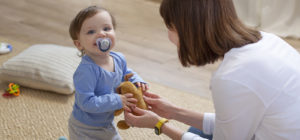Interdental Lisp
When your child is demonstrating an interdental lisp (frontal lisp), the tongue is forward and between the teeth. The result sounds like a “th” for an “s”. It would be like your student is saying “think” for “sink”.
Addental Lisp
When this is happening, you aren’t seeing the tongue between the teeth like they are for an interdental lisp. Instead, the tongue tip is touching the back surface of the teeth (or at least it is too far forward), and the edges of the tongue are flat.
Lateral Lisp
When your child is demonstrating a lateral lisp, the sides of his/ her tongue are flat- and because the sides aren’t lifting, air is flowing freely into the cheeks. When that escaping air mixes with saliva, it results in a “slushy” sound.
A lateral lisp can be bilateral or unilateral (meaning air may be escaping on both sides or one side).
Palatal Lisp
When your child has a palatal lisp, the tongue tip is too far back- it’s in the palatal area. The resulting sound would be more like a distorted “SH” instead of “s”.
Strident Lisp
This is when /s/ sounds “whistle-like”- and it’s because too much airflow is being pushed through a narrow opening.
Explaining Tongue Movement
“Hide your tongue.”
I think this is a common thing that is said to children when correcting a lisp.
The truth is, “hiding the tongue” will probably place the tongue directly behind the front teeth- and that’s going to result in an “addental” production of /s/. This has been my clinical experience.
Instead, I’d recommend trying to figure out what type of lisp your child has, so that you can better direct them to move their tongue to the right area.
“Oops- I heard slushy air. Make sure to lift the sides of your tongue,” I might tell my student who is demonstrating a lateral lisp. I know the “tunnel” wasn’t working, because air flowed freely into the cheeks.
“Try moving that tongue tip up just a little,” I often say to my student demonstrating an addental lisp.
“Move your tongue tip in and UP towards home,” I might direct my student with an interdental lisp. “I saw your tongue come between your teeth!”
“Slide your tongue tip forward, towards home (the alveolar ridge), just a little,” I could suggest if my student is demonstrating a palatal lisp. “It’s too far back.”
And if my student is demonstrating a strident lisp? “Oops, just a little too much air. Can you try it again, but be a little more gentle? Like… this?”




